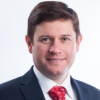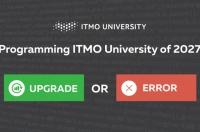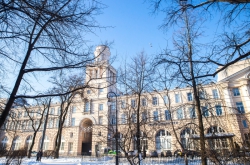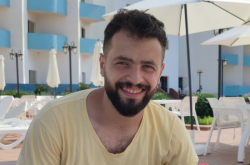In this year’s QS World University Ranking, ITMO University is ranked 511-520, almost a 100 positions above its debut ranking of 601-650 last year. With this result, ITMO is now among the top 50% of all the educational institutions in the ranking. The university also showed the highest growth rate among all St. Petersburg universities represented in the ranking. St. Petersburg Polytechnical University dropped three positions in the ranking and St. Petersburg State University improved by six positions. According to representatives of Quacquarelli Symonds, having analyzed the dynamics of the past five years, the company has found that the volume of research among Russian scientists has grown by 41.5%; meanwhile, the global average is 12.2%
“For Russia, it all changed with the launch of the 5-100 Russian Academic Excellence Project. One weak point shared by many of the countries represented in the ranking is the number of publications in prestigious scientific journals. For the longest time, research in Russia was only published in Russian, making it inaccessible to the international scientific community, but the situation has changed greatly since then. As for the citation index, its average growth among all countries is 22.2%; for Russia, it’s 63.5%. The dynamics shown by Russia in rankings makes us believe that, in the next 3 to 4 years, Russian universities will continue to improve their positions,” – said Ben Sowter, head of the Intelligence Unit at QS, in a comment for RIA Novosti.
ITMO University has improved its position thanks to several evaluation criteria, namely its academic reputation, employer reputation, and its faculty/student ratio. As before, one of ITMO’s strongest metrics is the ratio of international students: ITMO University is ranked 373 among all universities in this criteria. There has also been a noticeable increase in the university’s ratio of international academic staff.
But the most impressive result, which ensured ITMO University’s leap through the rankings, is the twofold increase in its citation-per-faculty metric. To assess this criterion, QS analyzes data provided by the Scopus database. This year’s ranking accounted for the publications made over 5 years (2012 to 2016) and the references made to these publications over the six-year period between 2012 and 2017.
“Overall, according to QS representatives, in 2018 Russian universities have shown the most growth in the entire history of the World Ranking, both in terms of quantity and quality; experts say that this time around, neither the US or the UK have performed such a leap forward. This happened, first and foremost, because of our reputation, as we’ve become more well-known and recognized internationally. We talk about ourselves and our successes more often and with more courage, and this is reflected in the expert evaluations. Russian universities are becoming more recognizable among academics and employers alike. Another factor was the positive growth dynamic in our faculty-to-student ratio: the fewer students there are per one member of academic staff, the better a university’s metric. A key growth driver for ITMO University was the rapid growth of its scientific metrics, such as publication activity and citation rate; according to QS, the latter has increased twofold, and only a few Russian universities can boast such an achievement. This speaks of an improvement in the quality of research projects carried out by the university, and their recognition by the international academic community. A twofold increase of our citation rate is an impressive result that shows how much our scientific reputation has grown. It should be noted, however, that Russian universities still have a way to go before they reach the average global citation rate (at least according to the QS methodology). Our scientists need to publish more content in top international journals and increase their reputation among their foreign colleagues. The second key growth factor for ITMO is internationalization: this year we ranked 373 by the share of international students,” – comments Ilya Kuftiryov, head of ITMO’s Rankings Research Center.
This year’s list of the world’s best universities includes 27 Russian universities, which is three more than last year (2018 marks the debut of Altai State University, Siberian Federal University and South Ural State University in the ranking). Most Russian universities have improved their positions: Moscow State University has shown the best result, having entered the top 100 in the 90th place; behind it is St. Petersburg State University in 235th place, and the third top Russian university is Novosibirsk State University in 244th place.
17 of the Russian universities present in the ranking are participants of the Project 5-100. The Lobachevsky State University of Nizhny Novgorod and Samara University have both moved up by more than 100 positions; Far Eastern Federal University, Peoples’ Friendship University of Russia and the Ural Federal University have all improved by 50 or more positions. QS analysts also noted that the expansion of the number of Russian universities in the top 300 and top 500 has been achieved solely by the efforts of universities-participants of Project 5-100.
Earlier this year, in the QS World University Rankings by Subject, ITMO University was placed 251-300 in the Computer Science & Information Systems subject ranking and 351-400 in both the Electrical & Electronic Engineering and the Physics & Astronomy subject rankings. The rankings took into account the opinions of academic experts and employers, as well as the universities’ citation rates and Hirsch indexes.
The first QS World University Ranking was published in November 2004 under the brand of THE-QS. Since 2010, the ranking is published independently, preserving the same ranking methodology. To acquire the necessary data to compile its rankings, Quacquarelli Symonds works with Elsevier, the owner of the Scopus database.






